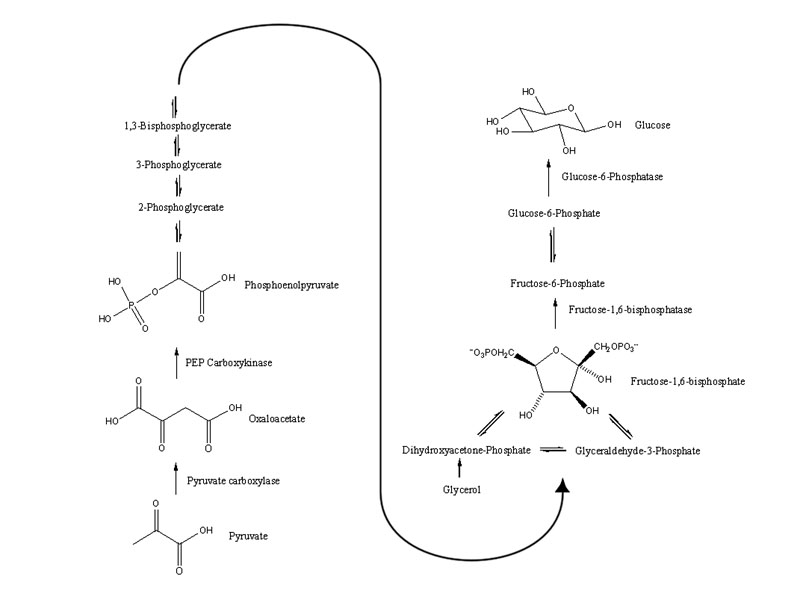Certain tissues, such as the brain and red blood cells, are absolutely dependent on glucose as their primary fuel. Ketone bodies aren't sufficient to provide the energy needs of these tissues. In the fasted state glycogen stores are sufficient to supply these tissue's requirement for glucose for approximately one day, so when the body is in the fasted state glucose must be formed from noncarbohydrate precursors, primarily lactate, certain amino acids, and glycerol. Gluconeogenesis is the pathway for converting noncarbohydrate precursors into glucose. The main routes of entry into gluconeogenesis are through pyruvate, oxaloacetate, or dihydroxyacetone phosphate. Most tissues do not have the ability to carry out gluconeogesis. Gluconeogenesis takes place mainly in the liver and to a lesser degree in the cortex of the kidney.
WikiPremed Resources
Integration of Metabolism Images
Conceptual Vocabulary Self-Test
Basic Terms Crossword Puzzle
Basic Puzzle Solution
Conceptual Vocabulary for Gluconeogenesis
 The WikiPremed MCAT Course is a comprehensive course in the undergraduate level general sciences. Undergraduate level physics, chemistry, organic chemistry and biology are presented by this course as a unified whole within a spiraling curriculum. Please read our policies on Privacy and Shipping & Returns. Contact Us. MCAT is a registered trademark of the Association of American Medical Colleges, which does not endorse the WikiPremed Course. WikiPremed offers the customers of our publications or our teaching services no guarantees regarding eventual performance on the MCAT. The WikiPremed MCAT Course is a comprehensive course in the undergraduate level general sciences. Undergraduate level physics, chemistry, organic chemistry and biology are presented by this course as a unified whole within a spiraling curriculum. Please read our policies on Privacy and Shipping & Returns. Contact Us. MCAT is a registered trademark of the Association of American Medical Colleges, which does not endorse the WikiPremed Course. WikiPremed offers the customers of our publications or our teaching services no guarantees regarding eventual performance on the MCAT.

WikiPremed is a trademark of Wisebridge Learning Systems LLC. The work of WikiPremed is published under a Creative Commons Attribution NonCommercial ShareAlike License. There are elements of work here, such as a subset of the images in the archive from WikiPedia, that originated as GNU General Public License works, so take care to follow the unique stipulations of that license in printed reproductions. |
